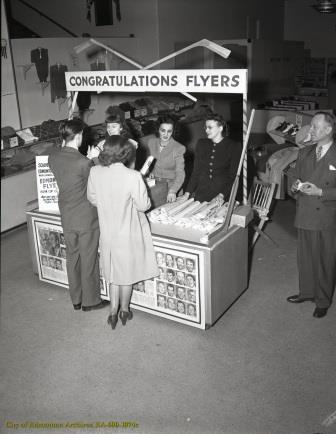Curatorial Statement
When we started thinking about Edmonton Souvenirs, we thought we had lots of examples of souvenirs of Edmonton in the City of Edmonton Heritage Collection. But as we pulled from the shelves, we realized that many aspects of Edmonton events, festivals, and landmarks are not represented. On the other hand, through influences and biases in past museum collecting, other events and landmarks are well-represented, or even over-represented. For example, we have a very extensive collection of souvenirs from the 1978 Commonwealth Games and the 1983 Universiade Games.
But why Trash or Treasure?
When you start to delve into the history of souvenirs, you find a lot of parallels to museum collecting. How and why people collect souvenirs can mirror museums and their collecting practices. In fact, a lot of souvenirs of all kinds often end up in museum collections. For example, the British Museum started in 1753 by purchasing the collection of Sir Hans Sloane’s over 80, 000 objects, which were souvenirs from his world travels and privileged connections. One of the functions of souvenirs is to act as keepsakes that evoke memories and museums also collect objects for the same purpose. Many museums even create their own souvenirs to sell in gift shops!
When we start to think about souvenirs and how they function in the world, we start to see the gaps and biases. We also start to think of a lot of questions, which we don’t always have good answers for.
What might people who visited Amiskwaciy-wâskahikan (Edmonton) in the past have kept as souvenirs to remember this place? What do you think visitors in the future will want as souvenirs?


